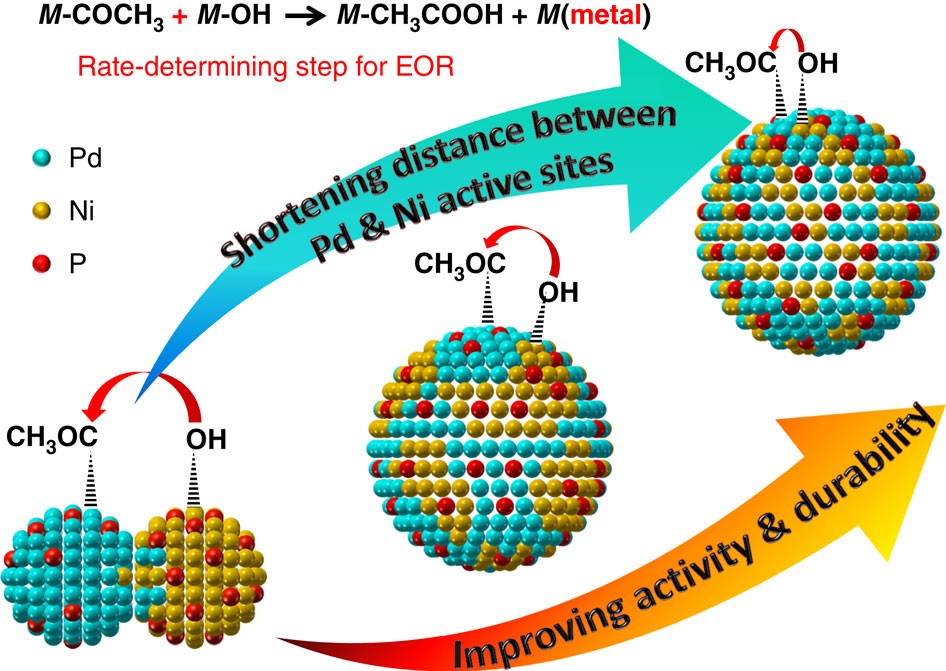
# **New Catalyst Facilitates Hydrogen and Acetic Acid Generation from Ethanol Without CO₂ Emissions**
A significant advancement in catalysis has the potential to lead to a more sustainable and carbon-neutral future for hydrogen generation. Researchers from Peking University in Beijing, along with collaborators from China and the UK, have created a new catalyst allowing for the selective generation of hydrogen and acetic acid from ethanol—without the direct release of carbon dioxide. This development may offer an alternative to industrial methods that currently depend heavily on fossil fuels.
## **The Demand for More Sustainable Hydrogen Production**
Hydrogen plays a vital role in industrial chemistry, with approximately 100 million tonnes consumed each year in applications such as ammonia synthesis and petroleum refining. Nevertheless, the majority of today’s hydrogen is sourced from fossil fuels, predominantly through steam methane reforming (SMR), a process that consumes significant energy and greatly contributes to greenhouse gas emissions. Lowering the carbon emissions associated with hydrogen production calls for alternative strategies, and bioethanol has arisen as a promising feedstock.
Ethanol can be transformed into hydrogen via two main traditional techniques:
– **Partial oxidation**, where ethanol interacts with oxygen, generating CO₂ as a byproduct.
– **Full steam reforming**, where ethanol reacts with water, again producing CO₂.
Both of these prevalent methods result in considerable carbon dioxide emissions, rendering them unsustainable over time.
## **Selective Partial Steam Reforming: A Breakthrough**
The current study presents a **selective partial steam reforming process**, which yields **acetic acid** in conjunction with hydrogen, instead of carbon dioxide. Acetic acid is already extensively utilized in the chemical sector for producing various acetates, classifying it as a valuable co-product.
“This reaction is not entirely novel,” states **Ding Ma**, a professor at Peking University and the lead researcher of the study. “However, previously, achieving a high selectivity for acetic acid has been challenging, often leading to the salt form of the acid instead of the free acid.”
### **Sophisticated Catalysis for Enhanced Selectivity**
To efficiently catalyze this reaction, researchers engineered a **molybdenum carbide-supported catalyst** augmented with **platinum and iridium**. Prior research has indicated that molybdenum carbide effectively activates water molecules at lower temperatures, making it a suitable support material.
The research team found that **platinum is very active** in ethanol reforming yet tends to form small aggregates that encourage undesired side reactions, such as producing CO₂ and methane. To mitigate this issue, **iridium** was incorporated, which binds effectively to the molybdenum carbide support, aiding in the atomic dispersion and stabilization of platinum.
Spectroscopic imaging revealed that both metals remained almost atomically scattered, helping to prevent excessive fragmentation of ethanol molecules and significantly diminishing unwanted byproducts. In the end, this arrangement achieved the **highly selective transformation of ethanol into hydrogen and acetic acid**, recording an **84.5% selectivity for acetic acid at 270°C**.
## **Economic and Industrial Feasibility**
An initial **techno-economic assessment** indicates that this method could stand up against current industrial techniques for hydrogen and acetic acid generation. Nonetheless, obstacles persist.
**Fabio Ribeiro**, a professor at Purdue University and co-director of an energy-transition project, acknowledges the research’s scientific merits but expresses concerns regarding commercial viability.
“At present prices, the total value of the produced hydrogen and acetic acid falls short of the costs for ethanol and process water,” Ribeiro comments. “How is profit achievable if your final products are valued less than your initial materials?”
He mentions that bioethanol production generally necessitates fertilizers derived from ammonia—another energy-intensive substance—raising doubts about the sustainability of utilizing ethanol as a low-carbon feedstock. Furthermore, even a comprehensive global pivot of ethanol to this process would still satisfy only a minor portion of worldwide hydrogen demand, resulting in an oversupply of acetic acid beyond current market requirements.
## **Future Directions: Tackling Challenges and Opportunities**
Ma and his research team acknowledge the existing economic barriers but assert that **price variations** in ethanol and acetic acid markets could influence profitability.
“For example, in the US, ethanol is significantly cheaper than acetic acid because of the abundant grain-derived ethanol,” notes Ma. “Conversely, in China, coal-derived methanol lowers acetic acid prices. This fluctuation indicates that profitability can change over time.”
### **Scope for Further Enhancement**
To improve the viability of this technique, researchers seek to **reduce or substitute iridium content**, potentially working toward a catalyst that does not depend on precious metals. This could render the process **cost-effective on a broader scale** while ensuring sustainability.
### **Wider Implications for Hydrogen Generation**
Despite recognizing that **water electrolysis powered by renewable energy** is presently the most effective method for green hydrogen production, Ma asserts that alternate strategies should still be explored.
“This process offers an additional route to defossilize hydrogen production.”